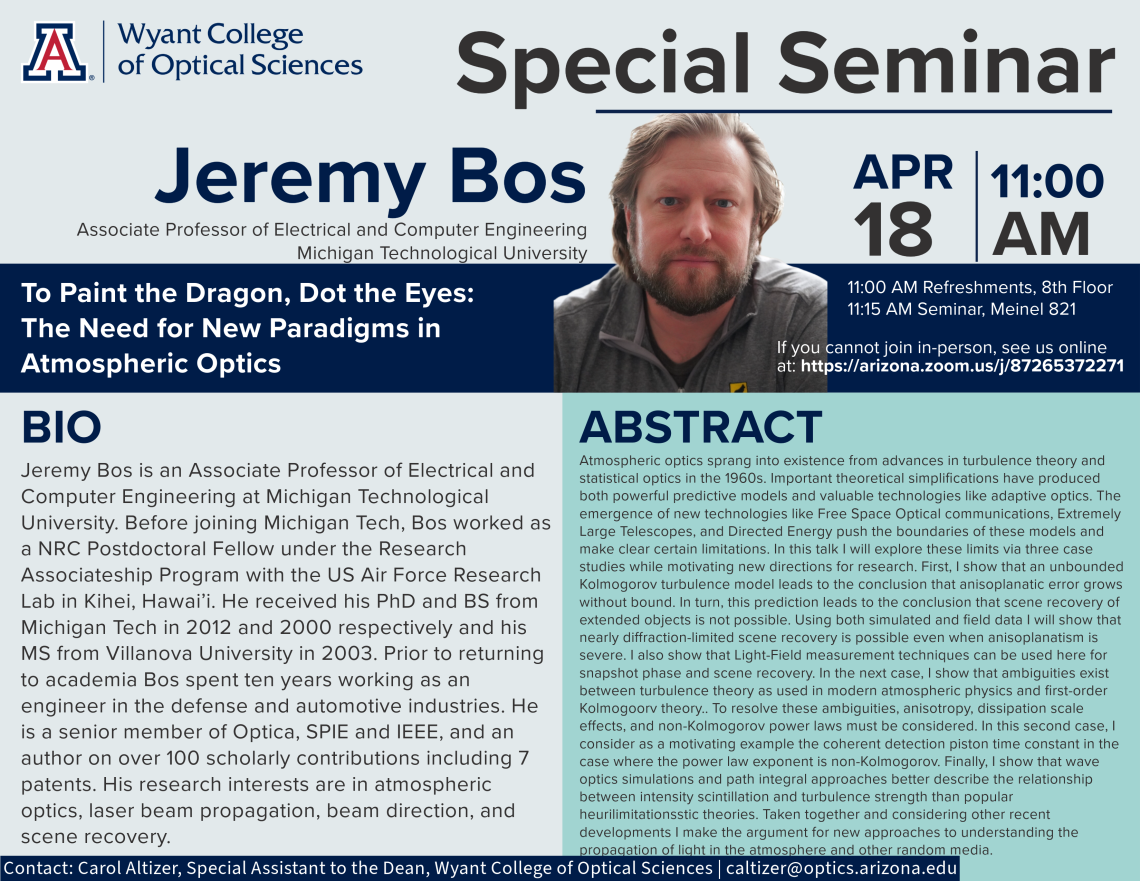
When
Where
Title
To Paint the Dragon, Dot the Eyes: The Need for New Paradigms in Atmospheric Optics
Abstract
Atmospheric optics sprang into existence from advances in turbulence theory and statistical optics in the 1960s. Important theoretical simplifications have produced both powerful predictive models and valuable technologies like adaptive optics. The emergence of new technologies like Free Space Optical communications, Extremely Large Telescopes, and Directed Energy push the boundaries of these models and make clear certain limitations. In this talk I will explore these limits via three case studies while motivating new directions for research. First, I show that an unbounded Kolmogorov turbulence model leads to the conclusion that anisoplanatic error grows without bound. In turn, this prediction leads to the conclusion that scene recovery of extended objects is not possible. Using both simulated and field data I will show that nearly diffraction-limited scene recovery is possible even when anisoplanatism is severe. I also show that Light-Field measurement techniques can be used here for snapshot phase and scene recovery. In the next case, I show that ambiguities exist between turbulence theory as used in modern atmospheric physics and first-order Kolmogoorv theory.. To resolve these ambiguities, anisotropy, dissipation scale effects, and non-Kolmogorov power laws must be considered. In this second case, I consider as a motivating example the coherent detection piston time constant in the case where the power law exponent is non-Kolmogorov. Finally, I show that wave optics simulations and path integral approaches better describe the relationship between intensity scintillation and turbulence strength than popular heurilimitationsstic theories. Taken together and considering other recent developments I make the argument for new approaches to understanding the propagation of light in the atmosphere and other random media.
Bio
Jeremy Bos is an Associate Professor of Electrical and Computer Engineering at Michigan Technological University. Before joining Michigan Tech, Bos worked as a NRC Postdoctoral Fellow under the Research Associateship Program with the US Air Force Research Lab in Kihei, Hawai’i. He received his PhD and BS from Michigan Tech in 2012 and 2000 respectively and his MS from Villanova University in 2003. Prior to returning to academia Bos spent ten years working as an engineer in the defense and automotive industries. He is a senior member of Optica, SPIE and IEEE, and an author on over 100 scholarly contributions including 7 patents. His research interests are in atmospheric optics, laser beam propagation, beam direction, and scene recovery.
